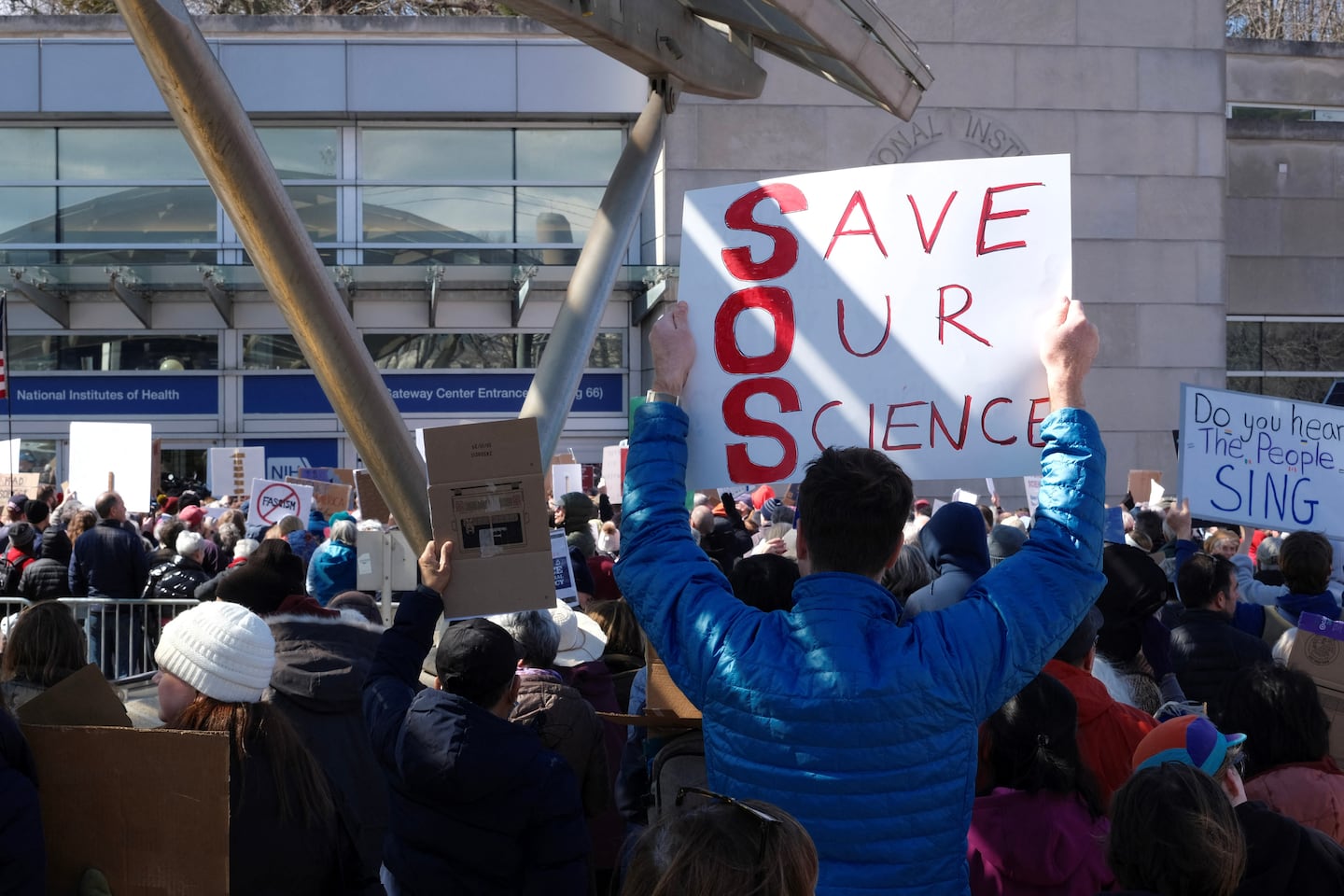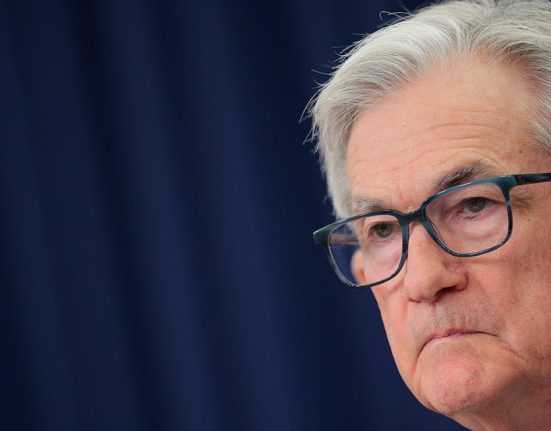Budget cuts from the National Institutes of Health, the National Science Foundation, and other federal agencies have prompted pushback from the academic community but also some sober reflections on the future of the nation’s government-centered model for bankrolling biomedical research. That model has fueled breakthroughs, from magnetic resonance imaging and targeted cancer therapies, to mapping the human genome to the vaccines that helped vanquish the COVID pandemic.
Universities’ reliance on federal funds has left them vulnerable to cutbacks by President Trump and other elected officials who accuse them of pursuing initiatives they object to, such as diversity and LGBTQ health issues. Earlier this month, the Trump administration said it would freeze $2.2 billion in multiyear grants to Harvard over allegations that the university has responded inadequately to antisemitism. It’s also reviewing nearly $9 billion in multiyear federal funding commitments to Harvard and its affiliates.
Harvard’s teaching hospitals in Boston were among the nation’s largest recipients of NIH grants last year, with Massachusetts General Hospital drawing more than $655 million and Brigham and Women’s Hospital more than $388 million.
Harvard sued the Trump administration last Monday, arguing it was deploying research funding cuts as leverage to exert control over Harvard’s academic affairs, as well as its admissions, hiring, and diversity practices, representing an unconstitutional abuse of federal power.
While waiting for the courts to weigh in, labs are reassessing their funding sources. In addition to federal grants, their research is often supported by grants from foundations and other funders. But lab directors see such funding as secondary. One scientist at Harvard Medical School described money from the Gates Foundation, one of the world’s largest private donors, as “sprinkles” on top of an “ice cream sundae” made up largely of public funding.
Researchers across New England and nationally are searching for ways to maintain or diversify their funding sources as the White House continues to target universities and research programs.
Jacob Borodovsky, an epidemiologist and researcher at the Geisel School of Medicine at Dartmouth, has received millions of dollars in federal grants in recent years to study cannabis legalization, the opioid epidemic, and alcohol use. Given the uncertainty around federal funding, he’d like to find alternative support but doubts he can.
“There’s not many private institutions that fund that kind of research,” Borodovsky said, noting there’s little economic incentive to conduct public health research. “Really, the only institution that would fund my kind of work is the government because they have a public health mandate.”
Harvard Business School Executive Fellow Bill George, the former chief executive of medical device giant Medtronic, said biopharma companies, private equity investors, wealthy philanthropists, and even Massachusetts’ state government may have to set up new funding pools to back early-stage research as the federal agencies back off.
“Private investors can and should step up” to protect the research enterprise, he said. But, he said, many are reluctant to put money into research that takes more than a decade to commercialize.
The system that’s bankrolled US research since World War II has attracted not only American innovators but international students, researchers, and scientists whose own countries devote fewer resources to cutting-edge science.
Under this system, launched by President Franklin Roosevelt’s science advisor Vannevar Bush, universities receive billions of federal dollars to conduct what Bush called “basic research” in areas such as energy, defense, and medicine. They then license their discoveries to companies that develop therapies, medical technology, and other commercial products.
The system grew out of an urgency to develop advanced weapons during World War II and the Cold War that followed. It’s since evolved into the leading peacetime generator of biomedical innovation.
While this US system is often described as the gold standard of research, it’s also been criticized for what computational biologist C. Brandon Ogbunu terms “empire science” — a bias toward high-profile initiatives such as the Human Genome Project. As more money flows to the big programs, less remains for small-scale exploratory ventures that could have a big payoff in areas such as rare genetic disorders.
Dependence on government largesse has made US universities uniquely vulnerable to the Trump administration’s cuts and threats, said Ogbunu, assistant professor of ecology and evolutionary biology at Yale University in Connecticut.
He said a new generation of researchers may have to pursue science in a “harm reduction mode,” making do with less government funding and fewer resources but sharing more data and decentralizing research tasks. He cited ventures in Switzerland and other countries that are already rethinking research practices along these lines.
“Too much of American research in higher education is fused to large and regular funding from NIH,” Ogbunu said. “What’s happening now is disruptive and destructive. But at moments like this, we can reflect on a system that’s deeply flawed. What we build in the future can’t look like what we had.”
Few think a return to the pre-World War II era, when research was funded and conducted by private nonprofits such as the Rockefeller Foundation and industry research groups like Bell Labs, is viable. While biopharma companies invest in research and development today, much of their money is directed toward late-stage drug candidates and other projects that can be quickly commercialized for profit, not basic research.
“It’s very hard to imagine our research structure as it stands today surviving serious NIH cuts,” Ogbunu said. “With less funding, labs will shrink.”
The sheer scale of funding from NIH and other US agencies dwarfs that of other countries, according to J. Stephen Morrison, senior vice president and director at the Center for Strategic and International Studies in Washington, D.C.
According to a 2024 report from the National Science Board, the US government logged $806 billion in gross domestic spending for research in 2021, followed by China ($668 billion), Japan ($177 billion), Germany ($154 billion), and South Korea ($120 billion). The United Kingdom spent about $98 billion, while France spent $77.2 billion in 2021, the report said.
“We’ve got these massive [US] university structures, major research universities that are bound at the hip with NIH,” said Morrison.

And the reach of the US system has long extended well beyond America’s borders, he said, with international clinical trials and research institutes receiving US funding.
Foundations may be able to step in more now, Morrison said, and there could be a bigger role for European nations or Canada.
Yet “there’s no quick and easy replacement” for US government funding, he said.
In recent years, China has dramatically increased its research spending, as biotechnology has become a top strategic goal, Morrison said. The Chinese model is highly centralized, with a national security focus and a civil-military fusion that frowns on global partnerships.
“It makes it increasingly difficult for non-Chinese scholars to operate in those environments,” he said.
While the funding model in the European Union draws from government funding, he said it is characterized by lower levels of investment, shorter timelines for research projects, and a greater degree of bureaucracy. Still, given the current turbulence in US research, he expects Europe to successfully recruit more international scientists.
American labs, meanwhile, may have to adjust to the shocks and instability that’s become their new reality in the Trump era.
Francesca Beaudoin, a clinical epidemiologist and academic dean of Brown University’s School of Public Health, has received federal funding for years, as well as money from foundations and industry.
Some of her research looks at the most effective doses of generic opioid medications. Without federal funding, she said, “it’s hard to imagine that we would be able to complete it.”
Such a project would be an unlikely candidate for industry funding, Beaudoin said, since the medications are already available. But the research findings, she said, could help millions of Americans suffering from opioid addiction.
“What I think is so important about the medical research that the government funds is that it is driven by the health priorities of the American people,” she said. “I don’t ever see a place where private entities are driving all of the medical research and innovation. I don’t think we would want that either.”
Amanda Gokee can be reached at amanda.gokee@globe.com. Follow her @amanda_gokee. Jonathan Saltzman can be reached at jonathan.saltzman@globe.com. Robert Weisman can be reached at robert.weisman@globe.com.






